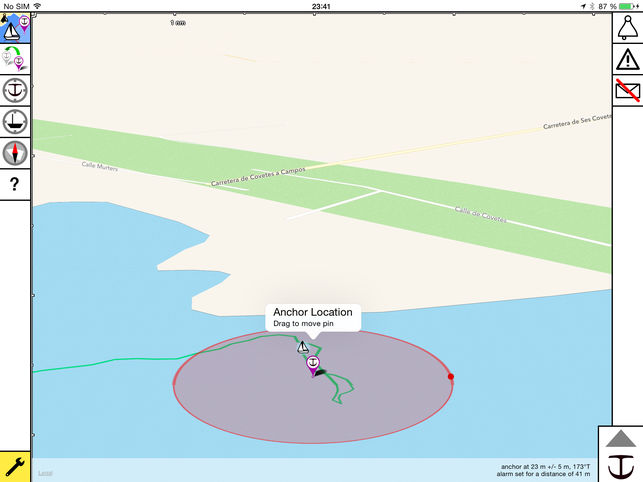Anchor well, sleep well
Anchoring is a fundamental skill in sailing. However unless you are living on your boat or sailing for a living, there are several important principles that can easily be forgotten. In this blog post (and YouTube Episode shown below), we hope to present to you a comprehensive guide on anchoring.
The ten tips to anchoring are as follows:
- Find a quiet spot
- Find a great bottom
- Communicate quietly
- Drop smoothly
- Drop plenty of chain
- Test well
- Use a snubber/bridle
- When to use a Kedge / Secondary Anchor
- Reduce Anchor Drag & Swing
- Motor Forward to Lift Anchor
Let's look at each in order:
1. Find a Quiet Spot
Generally look to the lee side of the island for wind (as this has the least amount of fetch). Meaning if the wind comes from the east, look for bays on the west side.
Check swell direction as this is independent of the wind direction.

Find out about tides. Your depth ratio can change substantially if you don't take into account the tidal range.
Do a drive-by, testing for depth and doing a visual. Get a better feel for the bottom. Take your time. It's worth it.
Assess other boats' angles as this will be a guide as to the strongest force in play, whether it is tidal current or wind.
Be careful not to cross other boats' anchors. If you do, either re-drop or have conversation with them. Sometimes crossing is hard to avoid (exhibit a: Hydra), so you just need to agree on the correct order of raising the anchor.

Hydra Harbour in Greece usually involves some form of anchor crossing incident. Image: Wikipedia
Assess other boat styles, how will they swing compared to you. Catamarans swing differently to monohulls.
Don’t anchor too close to other boats. Especially beware anchoring close to boats on mooring balls, as their swing radius is much less than yours. Um, every now and then you need to test this a bit. You may need to use a kedge to reduce your swing.

Wherever possible, try to find a decent space so you don't swing onto other boats.
2. Find a Great Bottom
Anchors hold very differently depending on what material they are digging into. Sand is generally accepted as the best bottom.
Weeds can be an issue as the flukes in the anchor can slip along the top, causing drag.

Rocks can get your anchor jammed. If you are anchoring in rock be prepared to dive your anchor or trip it (with a trip line).
Coral is a no-no for a few reasons: it kills the coral, it jams your anchor and on top of all that, it is unreliable for holding.
Check your pilot book for tips; they may have warnings about rocky bottoms or bad localized weather that regularly pops up.
3. Communicate Quietly
Communication can be done without shouting. This is the most effective, least stressful way of getting the job done. Here are a few hand signals you may wish to adopt:
- Down/up/stop hand signal
- When anchor hits bottom, signal
- Boat forward, reverse, hand signal
Dragging or not dragging (when testing your anchor hold) can be mimed.

Figure out a system that works for the both of you and anchor quietly.
4. Drop Smoothly
Point into the wind or the current, whichever is the strongest force.
Get the anchor over the roller gently.

Count the chain as it drops by using marks in the chain, or counting each meter as it goes over the roller. Indicate this to the helm (eg. 1 finger representing 10 metres, 2 fingers representing 20 metres etc).
Back up if there's no wind. You can try to dictate where your chain lays in this way, but beware that strong winds will eventually pull you the way they want.
Otherwise just let the wind blow you back. If it catches your bow that’s fine, just stop dropping occasionally to straighten up.
Keep engine in neutral and revs up high to assist the windlass. The windlass uses a lot of power from your batteries.
5. Drop Plenty of Chain
A reasonable rule of thumb is to use 5-8 times depth. This means in ten metres of water you would put out 50 metres of chain (same rule applies for feet: in 10' of water you would put out 50' of chain).
We love to empty the chain box where we can. Anchor chain is only working for you when it is outside your chain box.
The limiting factor here is swing to other boats.
Measure depth from the windlass (ie. add say 5’ or 1.5m to your depth for the part above the water).
Consider tidal range.
6. Test Well
How to check for dragging. Feel for vibration and watch what the anchor chain is doing when boat is in reverse.
Using transits. Line up something close and something far, and see if they move against each other.

Reverse, find the "Goldilocks" amount of reverse. Not too much, not too little, don’t kill your windlass.
Once your anchor is set and you have tested it on motor, swim it wherever possible. You can see how well it is set and sleep much, much better in a strong wind.

If you’re not happy, lift your anchor and re-set it. Keep doing this until you are happy. I think my record is about five times. We kedged on this occasion as a backup.
7. Use a Snubber / Bridle
Snubbers take the strain off the windlass and make for a quieter night.
If you have a fairlead, take your snubber through it. If not, you may need to go over the bow roller. Better if you can use the snubber through the fairlead to ease the strain on both the bow roller and the windlass.

Catamarans have bridles. These are critical as the bridle puts the pivot point in front of the boat rather than under it.
8. When to use a Kedge / Secondary Anchor
When and where they should be used
Take care when using a second anchor. They can wrap themselves around the primary.
In the Caribbean we have pretty consistent trade winds, so are fortunate to be able to set our secondary without much tangle issue.
 Our inspiration. The original anchorman.
Our inspiration. The original anchorman.
We will set one if the bay is fairly crowded and we want to limit our swing
We will also set one when we want to feel more secure during a big blow
9. Reducing Anchor Drag & Swing
Check the weather. This will tell you if the wind or swell is likely to change and become an issue later on.
Use Track on Navionics.
Use an app such as Drag Queen (coolest app name ever) or Anchor app.

Anchor! app available on the App Store
Beware of swinging as a result of sea/land breezes.
Beware anchoring near boats on mooring buoys. They have a smaller radius swing.
Kedge whenever you absolutely need to anchor at a location but need less swing or more holding surety.
10. Lifiting the Anchor
Take care you don't burn out the windlass when lifting by following these tips.
Know where your trip switch is.
Drive up over the anchor so the windlass is not pulling your boat forward.

When you are not in forward, get the boat into neutral revs.
As with most things anchor-related, find a balance between here.
Depending on your boat, the person on the front may need to kick the chain in the box to stop it forming a pyramid.
For any medium/long passages it is worth securing the anchor to a cleat or a hold-down, so the anchor is locked on, and the windlass isn't under a constant load.
Summary
This blog post and video covers how to anchor. Anchoring is simple, yet there are some principles which, unless followed, may result in your boat dragging and hitting something. Nobody wants that. Follow the above ten principles (in particular, drop plenty of chain and test your anchor) and sleep well.
Sailing Virgins is the only sailing academy in the world dedicated to lifting the sailing game of people in their 20s and 30s. After sailing lessons but want to hang out with people of your own age? Check here to read more about our courses, including our Island Adventure courses. If you'd like more information on sailing organisations (we are RYA and can teach ASA and NauticEd) click here. If you have someone who has risk issues with sailing, check out our blog post clarifying how safe sailing is.




